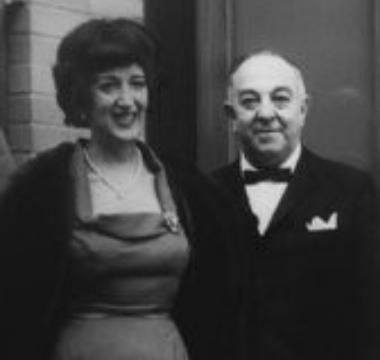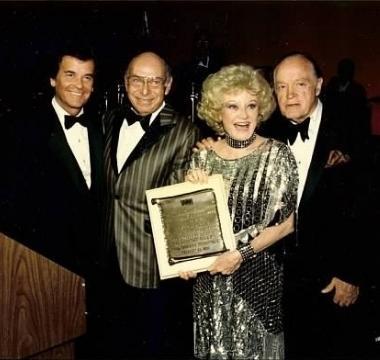The History Behind the Parkinson's Foundation
In 2016, the National Parkinson Foundation merged with the Parkinson’s Disease Foundation to form the Parkinson’s Foundation. Today, with offices in New York City and Miami, the Parkinson’s Foundation works towards making life better for people with Parkinson’s disease by improving care and advancing research toward a cure.
In 2017, Parkinson’s Foundation merged with the Melvin Yahr International Parkinson’s Disease Foundation. Melvin D. Yahr, MD, was a pioneer in PD research whose work led to the adoption of levodopa as a revolutionary new PD treatment. Dr. Yahr (1917-2004) graduated from New York University and its medical school. He served as Professor of Neurology and Associate Dean of Columbia University’s medical school. With funding from William Black to construct a new research building at Columbia, Dr. Yahr was appointed head of Columbia’s Parkinson’s research team and Scientific Director of the Parkinson’s Disease Foundation, which was founded in 1957 by Mr. Black. One of Dr. Yahr’s major career achievements was the development of the Hoehn-Yahr scale in 1967, the first widely used PD rating scale that is still in use today. He published more than 300 scientific papers and helped found the specialty of movement disorders.
In addition to his groundbreaking research, Dr. Yahr also served as a champion of young neurologists, particularly women and underrepresented groups. The Parkinson’s Foundation honors Dr. Yahr’s legacy by offering the “Melvin Yahr Early Career Award in Movement Disorders Research ” to promote leadership diversity in Parkinson’s research and to prepare young neurologists for a career in clinical research. The two-year grant is awarded to one neurology fellow every other year with the intent to fund individuals who have been underrepresented in Parkinson’s research at academic institutions. Learn more about the grant in his name here.
History of the Parkinson’s Disease Foundation
The Parkinson's Disease Foundation was the first private Foundation in the U.S. created to advance research into the cause of and cure for Parkinson's disease (PD), while assisting those living with PD.
In 1957, William Black, founder of a New York coffee and restaurant business, Chock Full O’Nuts, started the Foundation after learning that his controller and close friend was diagnosed with Parkinson’s.
Mr. Black established the Parkinson's Disease Foundation with his own money with the single goal to establish a research program aimed to find effective drug treatments for the disease. He met with H. Houston Merritt, MD, Chair of Neurology at Columbia University, and Melvin D. Yahr, MD, Professor of Neurology and Associate Dean of Columbia University medical school, to help create the first major research center for Parkinson’s. He made two major gifts to the university: one helped build the research laboratory building that is now named after him and conducts Parkinson’s research; the other to endow support for that research.

Historically, the Parkinson’s Disease Foundation worked closely with Mr. Black’s Chock Full O‘Nuts company on several PD awareness initiatives that elevated the Foundation’s mission.
After Mr. Black died in 1983, his widow Page Morton Black, became Chairman, advocating for the PD community for more than 30 years, until her resignation in 2012. She served as Chairman Emeritus until her death in July 2013.
Over time, the Foundation expanded its scope to a nationwide level. In 1999, the organization completed a merger with the United Parkinson Foundation, a Chicago-based Parkinson's organization. In addition to its ongoing education and advocacy efforts, the Foundation still funds major research programs at Columbia University, Weill Cornell Medical Center, Rush University Medical Center and individual investigators and fellows around the world.
History of the National Parkinson Foundation
When Mrs. Jeanne C. Levey founded the National Parkinson Foundation in 1957, little was known about Parkinson's disease. Mrs. Levey and her husband who was diagnosed with Parkinson’s retired to Miami, FL, where Mrs. Levey set out to help people with PD.
Prominent Miami attorney, Harold Kravitz, Esq, helped Mrs. Levey prepare the legal documents to incorporate the Foundation in Miami. Along with Mrs. Levey, he served the Foundation for more than 60 years, recruiting many influential members to the Board until his passing in 2017. For 22 years, until her death at age 92, Mrs. Levey nurtured the Foundation and watched it grow, as more and more persons became involved with and benefited from the work of the Foundation.

In 1979, the Board of Directors faced the challenge of replacing Mrs. Levey, and it turned to fellow board member Nathan Slewett, a successful businessman and attorney in South Florida. At the age of 66, Mr. Slewett became President and, later, Chairman of the Board. He served as Chairman Emeritus until his death in 2010.
Mr. Slewett brought in celebrities such as Bob Hope and Dick Clark to annual fundraising events, helping elevate the Foundation’s mission. Mr. Slewett created the popular patient education series addressing important topics in Parkinson’s for patients, caregivers and families. The National Parkinson Foundation was the first PD nonprofit to recognize the need of socioeconomically disadvantaged and minority patients.
During his tenure, the Foundation funded more than $182 million in research and support services; established a scientific advisory board and the Centers of Excellence network that consists of leading universities throughout the world; gave prominent researchers and scientists their start in the field through grant funding; and garnered international recognition.
In 2009, the Foundation launched what was among the largest-ever clinical studies of Parkinson’s, with 13,000 participants across four countries called the Parkinson’s Outcomes Project, which has now concluded.